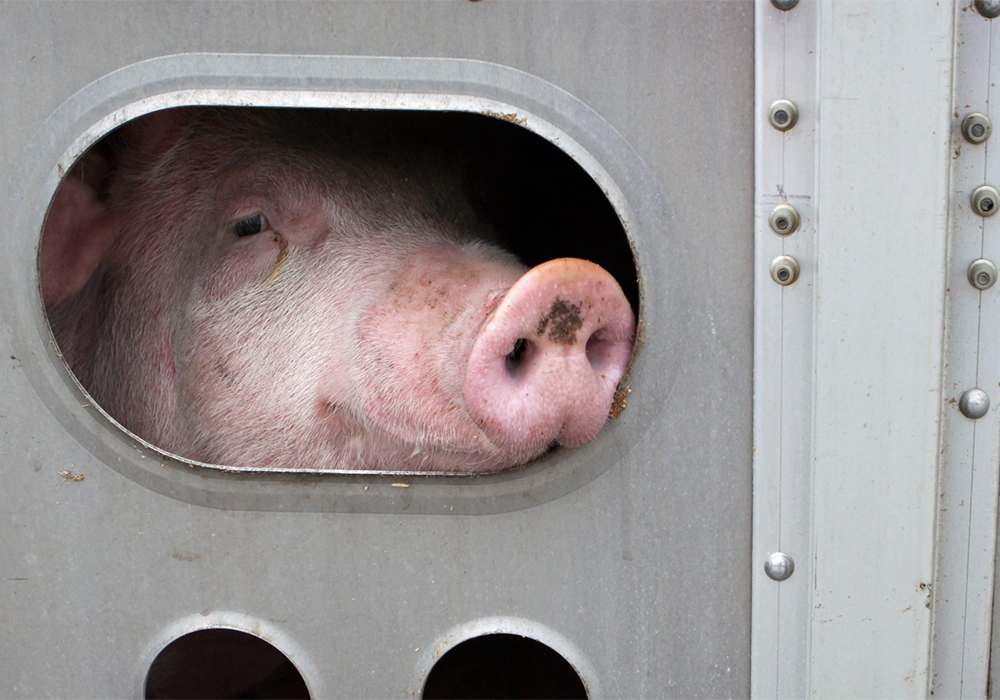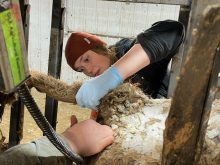Canadian hog slaughter was up three percent in the third quarter and market analyst Kevin Grier thinks that will continue into the fourth.
Speaking during an Oct. 21 webinar organized by J.S. Ferraro meat and livestock analysts, Grier said hogs are available if processors are able to keep up their pace.
That might be in doubt, given the Olymel-owned pork processing plant in Quebec has had a recent outbreak of COVID-19 among its workers and a pork plant in Burlington, Ont., has also reported cases.
Read Also

Feds propose overhaul of chronic wasting disease control program
Chronic Wasting disease control program getting updated by Canadian Food Inspection Agency with feedback encouraged from producers.
Grier said Canadian pork exports are up 19 percent, year to date, with China as the major reason.
Surging exports have reduced domestic availability of pork, said Grier. It was down 14 percent in the third quarter, to the point where pork is now out of competitive balance at the retail level compared to beef and chicken.
Grier said packer margins are strong now and that will likely continue into the fourth quarter.
“I still see robust production of Canadian product, not that that’s going to do much to make retailers happy because I think with the export focus, we’ll still continue to have domestic availability challenges in this fourth quarter.”
American agri-economist Rob Murphy said he believes many hogs in the United States were euthanized earlier this year when slaughter-ready numbers accumulated during processing plant closures from COVID-19.
“They just apparently vanished and I have to suspect pretty aggressive euthanizing of hogs as a partial explanation for that,” he said.
As a result he does not think there is much of a U.S. backlog, though at the worst point in processing troubles, it was estimated at three million head.
Murphy said American hog producers are scaling back production. The latest hog and pigs report indicated a 1.3 percent reduction in the breeding herd and he thinks downsizing will continue for the next two fiscal quarters.
Rising sow slaughter numbers show producers are liquidating some of their breeding stock.
However, he predicted that exports will see a big surge in the fourth quarter, with most going to either China or Mexico. As China rebuilds its herd after the major losses from African swine fever, exports of American pork may decline in 2021, Murphy said.
China claims it has recovered about 80 percent of its herd after the ASF-induced reduction but Murphy is skeptical of that number.
“I don’t doubt that they have aggressively rebuilt the hog herd there in China,” he said. “They pumped a lot of money into it.”
By 2022, the Chinese herd may be back to its previous size, at which time American exports to that country may become “a non-factor.” In the meantime, China is aggressive in the pork market.
The constant spectre of more processing plant closures for second wave pandemic reasons continues to haunt the outlook for both U.S. and Canadian producers and markets.
Neither Murphy nor Grier think major shutdowns are likely but the unease remains.
“I think that the… packers have done an astounding job in terms of employee safety and working in partnership with the workers. I think it’s been exemplary here in Canada,” said Grier.
“But again, it’s a sensitive issue. I don’t think there will be the massive… breakdowns but at the same time the sensitivity to it is still quite heightened and it doesn’t take much to make production go down fairly dramatically.”
Murphy said packers learned from the problems this spring.
“They’ve spent a ton of money. They’ve done a lot of things to keep the workforce safe there. (Plant shutdowns are) possible. It’s not a zero probability but I’d say it’s a low probability… that we actually go back to shut down half the industry’s capacity. I just don’t see that.”
















